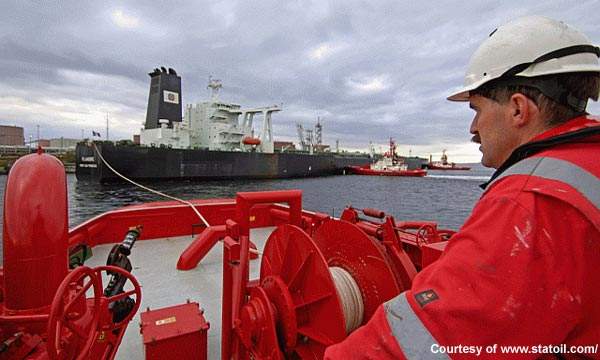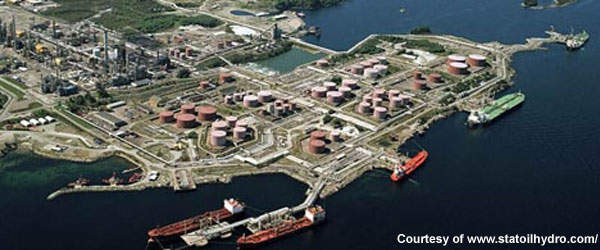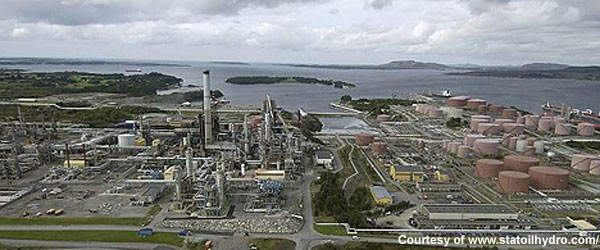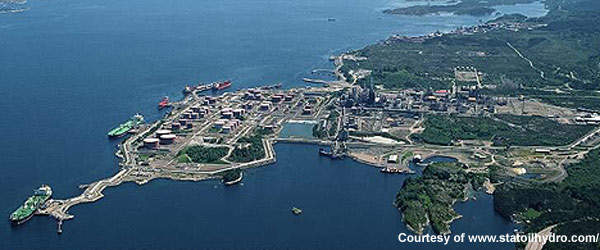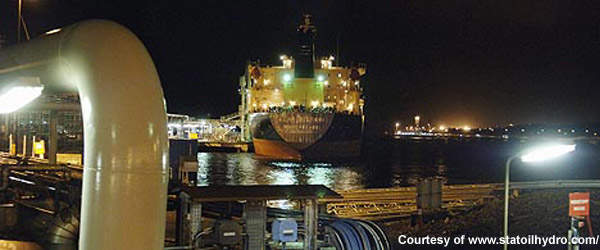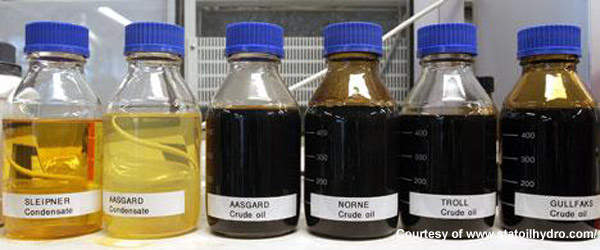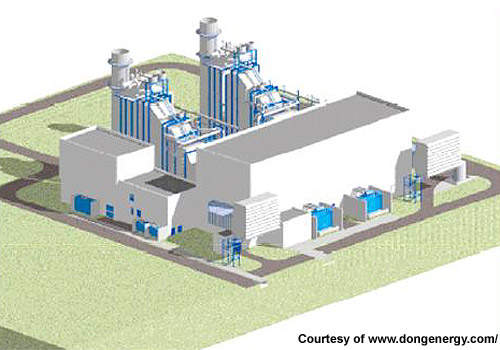Statoil built a 280MW CHP station with 350MW heat output at the Mongstad refinery near Bergen, Norway. The station supplies heat to the refinery and electricity to the Troll field in the North Sea. The first turf was cut in mid-January 2007, and the project was commissioned in 2010.
The project cost about NOK4bn (about €500m)and was built by Denmark’s Dong Energy utility. The company will operate the plant for 20 years.
The Norwegian government and StatoilHydro have also agreed to build a full-scale CO2 capture facility at the plant. A first development stage, capturing 100,000t a year, is underway and construction is scheduled for completion in the fourth quarter of 2011.
Stage II involves full-scale CO2 capture from both the CHP station and other emission sources at or around the refinery. A final decision on the size and type of this plant will be taken after the completion of the technical qualification process which will continue for three years. Detail engineering is scheduled to start immediately afterwards and will last for a period of two years with the investment decision to be taken by 2016. On completion, Statoil’s Mongstad project will be the world’s largest full-scale CHP CO2 capture and storage project.
Stage one of the CO2-capture and storage (CCS) project is known as the CO2 Technology Centre Mongstad (TCM). The facility is owned by Norwegian state (75.12%), Statoil (20%), Shell (2.44%) and Sasol (2.44%). The TCM facility will be financed by the Norwegian government.
Bringing electricity to troll
When Norway signed the Kyoto Protocol in 1998, it used hydropower almost exclusively.
The CO2 emissions from gas-fired power plants would violate the Protocol, and the country has developed large-scale research programmes like CLIMIT and Gassnova. DONG Energy, Hydro, Shell, Statoil and Vattenfall are partnering with the Ministry of Petroleum and Energy on the project.
The Mongstad plant has two Dong 130MW gas turbines. The flue gas from the gas turbines is taken to the waste heat recovery units in which the first heating surface is the crude heating coil. Downstream of the crude coil a gas burner for supplementary firing provides additional heat input. The flue gas is then cooled in a traditional one-pressure exhaust boiler producing process steam to the refinery.
Statoil has contracted Alstom to test the chilled ammonia process for CO2 capture. The 40MW test and product validation facility was completed in 2009–2010, and was in test for 12–18 months. It will lead to a larger 2 million t/y unit.
As well as supplying the refinery, the CHP station also provides power for the Troll A gas platform and the Kollsnes processing plant under contract with the Troll licence. It burns natural gas from Troll and fuel gas supplied by the refinery. The facility ensures long-term electricity deliveries to Troll, where demand is set to rise because more compressor capacity will be needed to transport gas as reservoir pressure declines.
A planned gas pipeline from Kollsnes to Mongstad represents part of the production and landfall system for the Troll field. The Mongstad CPH station will strengthen Norway’s overall energy balance and relieve a particular power shortage in the Bergen region.
Statoil’s Mongstad centre
A thinly-populated district on Norway’s west coast sends more than 340 million barrels of oil per year throughout the world. These shipments form part of the crude exports which account for a fifth of Norway’s gross domestic product.
The Mongstad oil refinery has an annual capacity of ten million tonnes. Ranked as the largest refinery in Norway, it is medium sized for Europe. It belongs to Mongstad Refining, which is in turn owned 79% by Statoil and 21% by Shell. All crude oil refined at the plant comes from the Norwegian continental shelf. The principal products are petrol, diesel oil, jet fuel and other light petroleum products.
The heaviest oil components are partially used to produce petroleum coke (petcoke), a raw material for anode production in Norway’s aluminium industry. Petrol production at Mongstad corresponds to 150% of Norwegian consumption. Most of the refinery’s output is exported, particularly to other European markets.
Vessels call roughly 2,000 times a year at the centre, which has a refinery, crude oil terminal, product technology and customer service unit and fractionation plant for NGL. The largest ships have to be escorted by tugs over the final five nautical miles into Mongstad.
Statoil’s port at Mongstad is the largest in Norway measured by tonnage, and second only to Rotterdam for shipping crude oil and refined products in Europe. Since the facility was first opened 30 years ago, it has received almost 50,000 ship calls.

